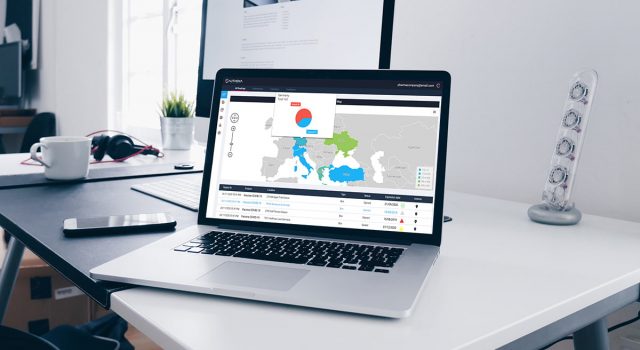
In the fast-paced world of logistics and supply chain management, real-time monitoring has become an essential tool for businesses striving to enhance their delivery processes. By leveraging advanced technologies, companies can track their shipments accurately, optimize routes, and ensure timely deliveries, thereby increasing customer satisfaction and operational efficiency.
The foundation of this transformation lies in effective shipment tracking software. Real-time monitoring involves the continuous tracking of shipments from the point of origin to the final destination.
This process enables companies to gather and analyze data instantaneously, allowing them to make informed decisions and respond promptly to any issues that arise during transit. The goal is to create a transparent and responsive supply chain where every movement of goods is visible and controllable.
The technology behind real-time monitoring includes GPS tracking, Internet of Things (IoT) devices, and advanced analytics. These tools work together to provide a comprehensive overview of the delivery process, ensuring that any deviations from the planned route or schedule are detected and addressed immediately.
Benefits of Real-Time Monitoring

Implementing real-time monitoring offers numerous benefits that significantly improve delivery operations. One of the most important advantages is enhanced visibility. Companies can track their shipments in real-time, providing them with up-to-date information about the location and status of their goods. This visibility helps in identifying potential delays and taking corrective actions swiftly.
Another key benefit is improved customer satisfaction. With accurate tracking information, customers can receive precise delivery times and status updates, reducing uncertainty and enhancing their overall experience. Additionally, real-time monitoring enables proactive communication with customers, keeping them informed about any changes or delays in their delivery schedule.
Operational efficiency is also greatly enhanced through real-time monitoring. By analyzing data from the tracking system, companies can optimize their delivery routes, reducing fuel consumption and transit times. This leads to cost savings and a more sustainable operation. Moreover, real-time data allows for better inventory management, ensuring that stock levels are maintained optimally and reducing the risk of overstocking or stockouts.
Choosing the Right Shipment Tracking Software
Selecting the appropriate shipment tracking software is crucial for successful real-time monitoring. The right software should offer comprehensive tracking features, easy integration with existing systems, and user-friendly interfaces. It should also provide robust analytics capabilities to help businesses gain insights from their data.
When evaluating shipment tracking software, consider factors such as scalability, reliability, and support. The software should be able to handle the volume of shipments your business processes and adapt to any changes in your operations. Additionally, it should offer reliable performance with minimal downtime to ensure continuous tracking. Finally, good customer support is essential to address any issues or concerns promptly.
Integrating Real-Time Monitoring into Your Operations

Integrating real-time monitoring into your delivery operations involves several steps. First, you need to assess your current processes and identify areas where real-time monitoring can add value. This might include tracking shipments, optimizing routes, or improving communication with customers.
Next, choose the right technology and tools to support real-time monitoring. This includes selecting suitable shipment tracking software, as well as any necessary hardware such as GPS devices or IoT sensors. Ensure that these tools can be integrated seamlessly with your existing systems to avoid disruptions in your operations.
Once you have the necessary tools in place, the next step is to implement the system. This involves setting up the software, configuring the tracking devices, and training your staff on how to use the new system. It’s essential to provide adequate training and support to ensure that everyone understands the benefits of real-time monitoring and how to use the technology effectively.
Overcoming Challenges in Real-Time Monitoring
While real-time monitoring offers numerous benefits, there are also challenges that businesses need to address. One of the primary challenges is the cost of implementing the technology. This includes the initial investment in hardware and software, as well as ongoing maintenance and support costs. However, the long-term benefits of improved efficiency and customer satisfaction often outweigh these initial costs.
Another challenge is data management. Real-time monitoring generates a large amount of data, which needs to be processed and analyzed to be useful. Businesses need to have the right tools and expertise to manage this data effectively and derive actionable insights from it.
Privacy and security concerns are also important considerations. With real-time monitoring, sensitive information about shipments and customers is constantly being transmitted and stored. Companies need to implement robust security measures to protect this data from unauthorized access and ensure compliance with relevant regulations.
Future Trends in Real-Time Monitoring

The field of real-time monitoring is constantly evolving, with new technologies and trends emerging that promise to further enhance delivery processes. One such trend is the increasing use of artificial intelligence (AI) and machine learning. These technologies can analyze vast amounts of data from real-time monitoring systems to predict potential issues and optimize delivery routes.
Another trend is the integration of blockchain technology. Blockchain offers a secure and transparent way to record and verify transactions, making it ideal for tracking shipments and ensuring the integrity of the supply chain. By combining blockchain with real-time monitoring, businesses can enhance the security and reliability of their delivery operations.
Additionally, advancements in IoT technology are enabling more precise and granular tracking of shipments. IoT devices can monitor various parameters such as temperature, humidity, and shock, providing real-time data that can be used to ensure the quality and safety of goods during transit.
Conclusion
Implementing real-time monitoring is a game-changer for businesses looking to improve their delivery processes. By leveraging advanced technologies such as GPS tracking, IoT devices, and shipment tracking software, companies can achieve greater visibility, efficiency, and customer satisfaction. Although there are challenges to overcome, the long-term benefits make it a worthwhile investment.
For those seeking to enhance their real-time monitoring capabilities, exploring the best shipment tracking software options is a great starting point. With the right tools and a strategic approach, businesses can transform their delivery operations and stay ahead in the competitive logistics landscape.






